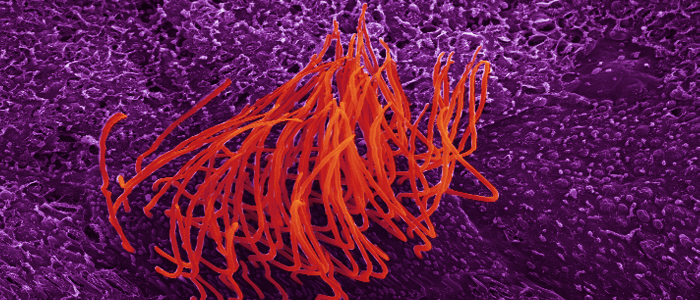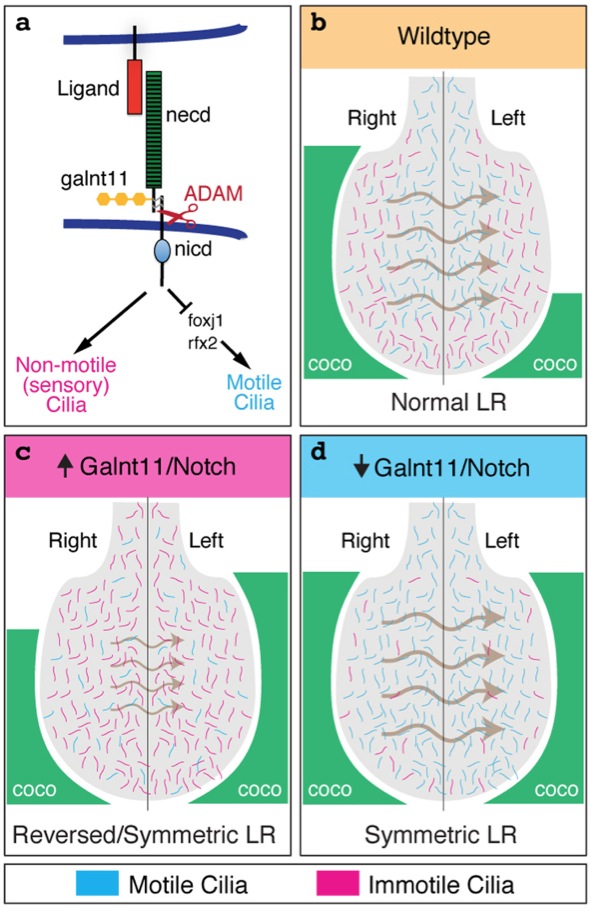Xenopus as a disease model for heterotaxy in humans
Heterotaxy disorders are caused by disturbance in the establishment of the left-right body axis is associated with major congenital heart diseases. In a previous report (Fakhro et al. 2011), galnt11 was found among several gene candidates through human genetic screening to cause heterotaxy. Testing these candidate genes in developing Xenopus embryos phenocopies heart looping defects seen in human patients.
As published in Nature, Boskovski et al. 2013 continue to investigate the role of the human heterotaxy gene, galnt11. Galnt11 enzymatically activates Notch through N-acetylgalactosamine-type O-glycosylation. Using gene knock-down easily achievable in Xenopus, the role of galnt11 in notch signalling was tested using X. tropicalis. Early left-right patterning in Xenopus is determined by right-to-left lateral flow of fluid within the gastrulating embryo. This flow is generated by the beating of gastoceol roof plate ciliated cells of the left-right organizer (LRO). The Khohka lab developed a quantitative live imaging technique for visualizing these cellular movements observing changes the ratio between motile cilia and sensory immotile cilia in the gastroceol roof plate as expression of these key genes were manipulated.
Galnt11 and Notch gain of function reduced the number of multiciliated epidermal cells. Conversely, loss of function of these genes increased the density of these cells in the epidermis. Galnt11 loss of function does not perturb the structure of epidermal cilia.
A model of their findings is shown below:
Click here to see the article in Nature.
Adapted with permission from Macmillan Publishers Ltd: Boskovski et al. (2013). The heterotaxy gene GALNT11 glycosylates Notch to orchestrate cilia type and laterality. Nature: (2013) doi:10.1038/nature12723 , copyright (2013).
Last Updated: 2013-11-11



